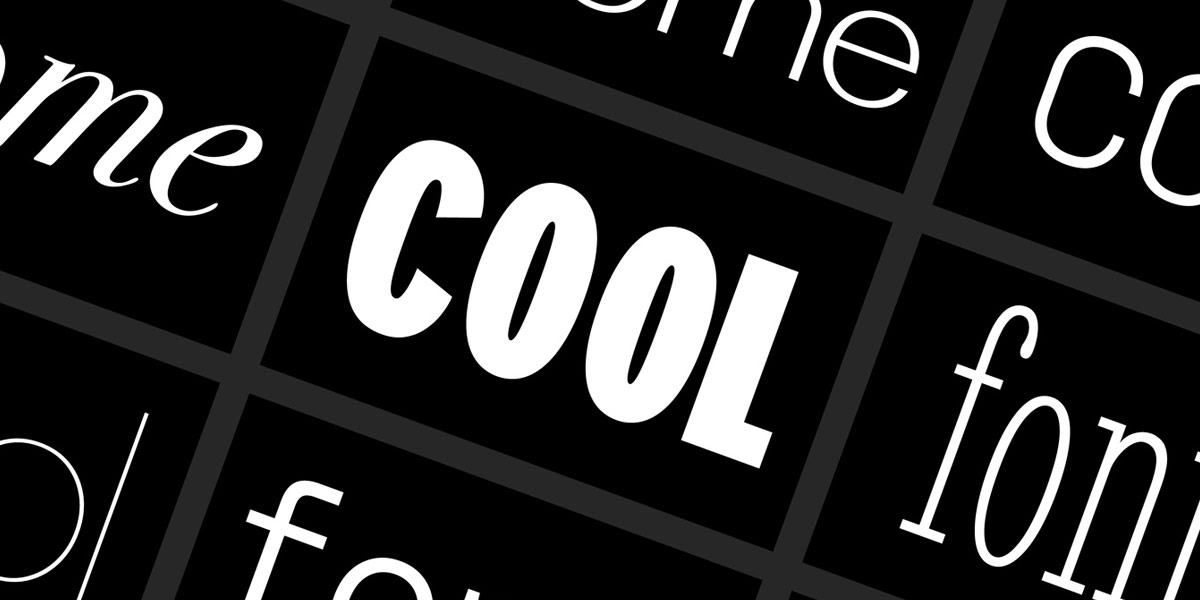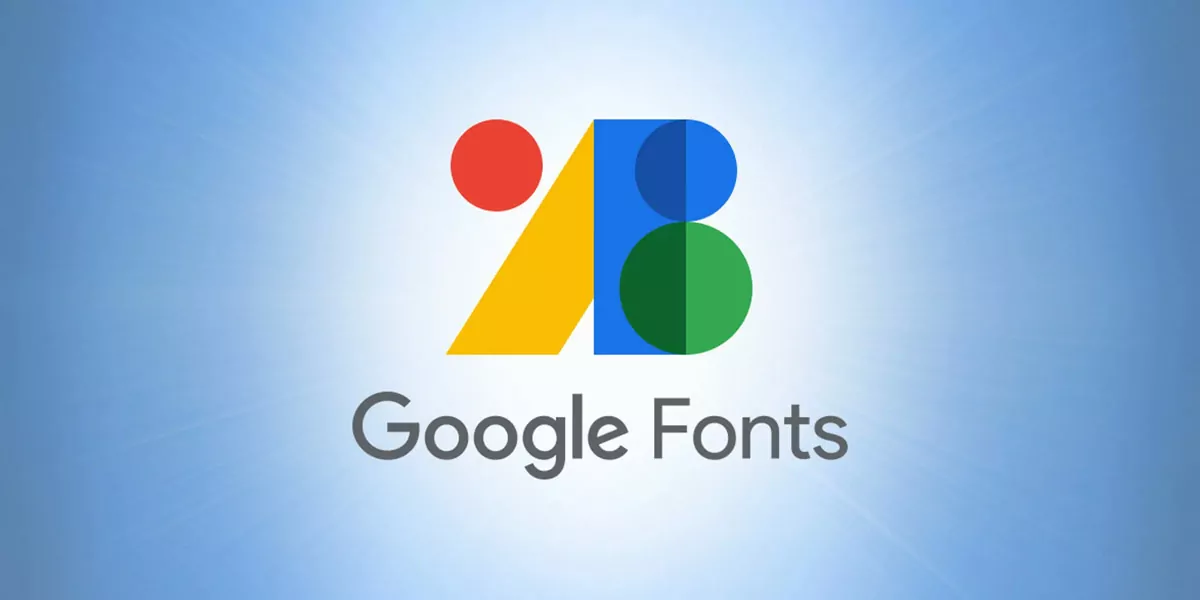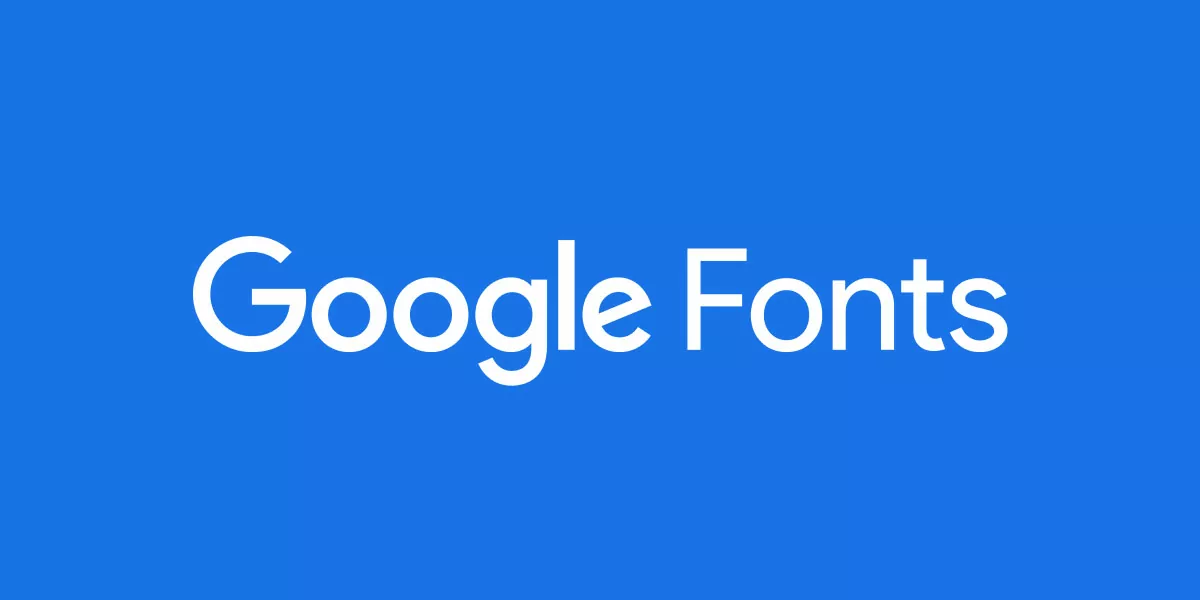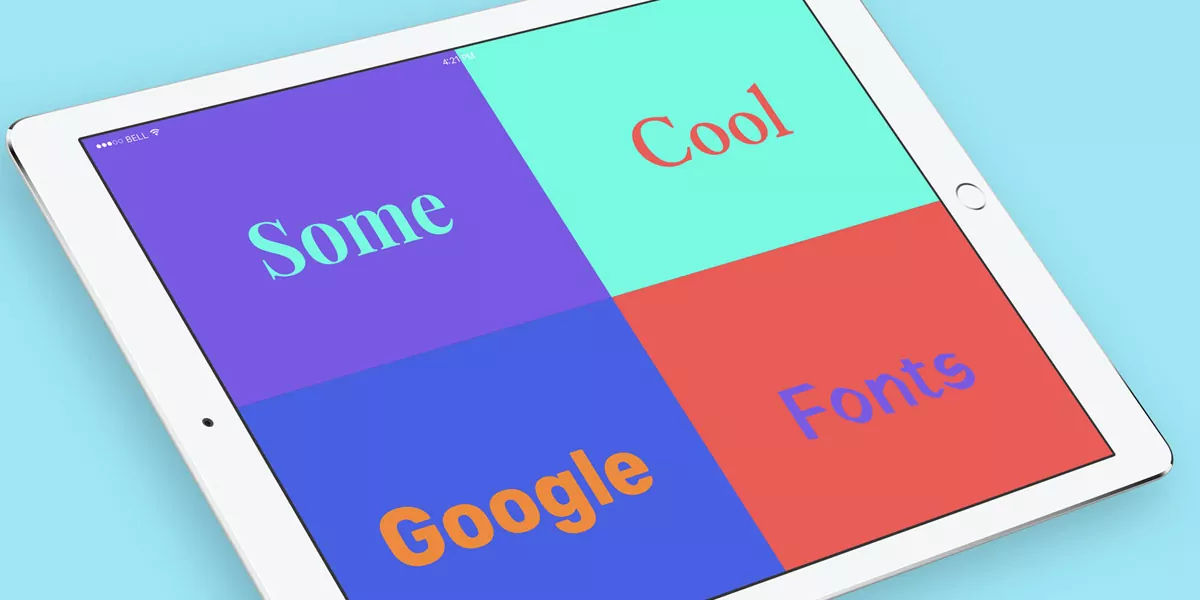
When it comes to designing a website, choosing the right font plays a crucial role in creating an appealing and engaging user experience. Fonts have the power to convey emotions, enhance readability, and reflect the brand’s identity. In the digital era, where the majority of websites rely on text-based content, it’s essential to utilize fonts that not only look aesthetically pleasing but also provide a seamless reading experience. One such valuable resource for web designers and developers is Google Fonts. In this article, we will explore the best Google web fonts for 2023 and provide insights on how to choose the perfect font for your website.

The Best Google Web Fonts 2023
What are Google Fonts?
Google Fonts is an extensive collection of open-source fonts that are free to use. It offers a diverse range of typefaces, including sans-serif, serif, display, and handwriting styles. The fonts are optimized for web usage, ensuring fast loading times and cross-browser compatibility. Google Fonts can be easily integrated into websites, and the usage is not limited to specific platforms or devices. This flexibility makes Google Fonts a popular choice among designers and developers worldwide.
Using Google Fonts brings several benefits to web projects. Firstly, the vast library of fonts allows for a wide range of creative possibilities, enabling designers to find the perfect fit for their website’s aesthetics. Secondly, the fonts are hosted on Google’s servers, eliminating the need for self-hosting and reducing the burden on website performance. Lastly, Google Fonts are constantly updated and maintained, ensuring that the fonts remain compatible with evolving web standards and technologies.

The Best Google Web Fonts 2023: What are Google Fonts?
How to Choose the Best Google Fonts for Your Website
Selecting the right font for your website requires careful consideration. The font choice should align with the website’s purpose, target audience, and overall design concept. Here are some factors to keep in mind when choosing a font:
- Readability: The font should be easy to read across different devices and screen sizes. Avoid overly ornate or excessively condensed fonts that may compromise legibility.
- Branding: If the website represents a brand or company, the font should reflect its personality and values. Consider whether the font aligns with the brand’s identity and message.
- Compatibility: Ensure that the chosen font is compatible with a wide range of devices and browsers. Test the font across various platforms to avoid any rendering issues.
- Contrast: Pair fonts with contrasting styles to create visual interest and establish a hierarchy of information. Combining a serif font with a sans-serif font is a common approach.
- Emotion: Different fonts evoke different emotions. Select a font that resonates with the intended emotional tone of the website. For example, a playful font may suit a children’s website, while a sophisticated font may be more suitable for a luxury brand.
With thousands of fonts available in the Google Fonts library, it can be overwhelming to narrow down the options. To simplify your selection process, consider the following tips:
- Begin by defining the mood and style you want to convey through your website. Determine whether you prefer a classic, modern, elegant, or casual look.
- Consider the readability of the font. Test it on different devices and screen sizes to ensure it remains legible in all scenarios.
- Explore the recommended font pairings provided by Google Fonts. These combinations have been curated by experts and can save you time in finding harmonious font combinations.
- Take inspiration from established websites in your industry. Analyze the fonts they use and see if any align with your desired aesthetic and branding.
- Experiment with different font weights and styles within the same font family. This can provide versatility and variations in emphasis.
With these considerations in mind, you can confidently navigate through the vast collection of Google Fonts and find the perfect typography for your website.

The Best Google Web Fonts 2023: How to Choose
Top 10 Best Google Fonts for 2023
Based on their popularity and versatility, the following are the top 10 Google Fonts for 2023:
Open Sans
| Description | Recommended use |
|---|---|
| Open Sans is a humanist sans-serif font known for its excellent readability across various screen sizes. It has a contemporary feel and is suitable for both headings and body text. | Ideal for websites that prioritize clarity and simplicity, such as corporate websites, blogs, and online magazines. |
Roboto
| Description | Recommended use |
|---|---|
| Roboto is a versatile sans-serif font designed for improved readability on both digital and print mediums. It offers a modern and friendly look with a wide range of font weights. | Well-suited for websites in technology, fashion, and lifestyle niches, as well as mobile applications. |
Montserrat
| Description | Recommended use |
|---|---|
| Montserrat is an elegant and geometric sans-serif font inspired by the signage of the Montserrat neighbourhood in Buenos Aires. It has a strong visual presence and is ideal for headings and titles. | Perfect for fashion, beauty, and creative portfolios where a touch of sophistication is desired. |
Lato
| Description | Recommended use |
|---|---|
| Lato is a versatile and friendly sans-serif font that offers excellent legibility in both small and large sizes. It has a modern appearance and works well for both body text and headings. | Suitable for a wide range of websites, including business websites, educational platforms, and online stores. |
Raleway
| Description | Recommended use |
|---|---|
| Raleway is an elegant sans-serif font with thin and minimalistic letterforms. It provides a clean and sophisticated look and is popular for fashion and lifestyle blogs. | Ideal for minimalistic and high-fashion websites, as well as personal portfolios and creative agency websites. |
Merriweather
| Description | Recommended use |
|---|---|
| Merriweather is a serif font designed for comfortable reading, particularly in long-form content. It offers a traditional and classic appearance, making it suitable for editorial websites and blogs. | Well-suited for news websites, educational platforms, and any website that requires extensive text content. |
Playfair Display
| Description | Recommended use |
|---|---|
| Playfair Display is an elegant and stylish serif font with high contrast between thick and thin strokes. It exudes a sense of luxury and sophistication. | Perfect for high-end fashion brands, luxury goods, and upscale lifestyle blogs. |
Poppins
| Description | Recommended use |
|---|---|
| Poppins is a modern and geometric sans-serif font with a balanced and approachable design. It offers a wide range of font weights and is suitable for various design purposes. | Well-suited for websites in the tech industry, corporate platforms, and creative portfolios. |
Source Sans Pro
| Description | Recommended use |
|---|---|
| Source Sans Pro is a sans-serif font that combines simplicity and versatility. It has a wide range of font weights, making it adaptable for different design scenarios. | Suitable for a wide range of websites, including educational platforms, online magazines, and e-commerce stores. |
Nunito
| Description | Recommended use |
|---|---|
| Nunito is a friendly and modern sans-serif font with rounded letterforms. It offers excellent legibility and a warm aesthetic, making it suitable for various design contexts. | Perfect for websites related to health and wellness, food and hospitality, and creative agencies. |
These top 10 Google Fonts for 2023 provide a solid foundation for designing visually appealing and user-friendly websites across different industries. Experiment with these fonts and find the ones that best align with your brand and design goals.

The Best Google Web Fonts 2023: Top 10
Best Practices for Using Google Fonts
While Google Fonts offer a wide range of options, it’s essential to consider site optimization when incorporating them into your website. Here are some best practices to follow:
- Limit the number of fonts: Using multiple fonts can negatively impact website performance. Stick to a maximum of three fonts per page to ensure faster loading times.
- Subset the fonts: Google Fonts allows you to create subsets that include only the characters you need. By doing so, you can reduce the font file size and improve page load speed.
- Leverage font-display property: Utilize the
font-displayproperty to control how the fonts are rendered during page load. This ensures a smooth user experience, even if the fonts take longer to load. - Combine fonts with system fallbacks: Specify fallback font families in your CSS to ensure that if a user’s browser fails to load the Google Font, a suitable alternative will be displayed.
- Optimize caching: Implement caching techniques to reduce the number of HTTP requests and improve the overall performance of your website.
By implementing these best practices, you can enjoy the benefits of Google Fonts without compromising your website’s performance.

The Best Google Web Fonts 2023: Best Practices for Using
Conclusion
Choosing the right font is an integral part of web design, and Google Fonts provides a vast array of options for every style and purpose. In this article, we explored the best Google web fonts for 2023, including popular choices like Open Sans, Roboto, Montserrat, and more. We also discussed how to choose the best font for your website by considering factors such as readability, branding, and compatibility. Additionally, we highlighted best practices for using Google Fonts, emphasizing the importance of site optimization.
By utilizing Google Fonts effectively, you can enhance the visual appeal and readability of your website while maintaining optimal performance. So go ahead and explore the diverse collection of Google Fonts to find the perfect typography that elevates your web design.
FAQs
Why are Google Fonts important for web design?
Google Fonts play a crucial role in web design as they provide a vast collection of free, high-quality fonts that can enhance the overall aesthetics and readability of a website. By using Google Fonts, designers have access to a diverse range of typography options, allowing them to create visually appealing and engaging websites.
How many Google Fonts are available in 2023?
As of 2023, Google Fonts offers a wide selection of over 1,000 font families, each with multiple styles and weights. This extensive library ensures that designers have plenty of choices to find the perfect font for their specific project.
What are the most popular Google Fonts in 2023?
The popularity of Google Fonts can vary depending on current design trends and individual preferences. However, some of the most commonly used Google Fonts in 2023 include Open Sans, Roboto, Montserrat, Lato, and Raleway.
How do I choose the best Google Font for my website?
To choose the best Google Font for your website, consider factors such as the mood and style you want to convey, readability on different devices, and compatibility with your brand. Experiment with different fonts, test their legibility and seek inspiration from established websites in your industry.
Can I use Google Fonts for free?
Yes, Google Fonts are free to use for both personal and commercial projects. You can incorporate them into your website, digital applications, print materials, and more without any licensing restrictions.
How do I install Google Fonts on my website?
Installing Google Fonts on your website is a straightforward process. Visit the Google Fonts website, browse through the font collection, and select the desired font(s). Then, follow the provided instructions and copy the HTML or CSS code snippet into your website’s code to integrate the chosen font(s) into your design.
What are some tips for pairing Google Fonts?
When pairing Google Fonts, keep these tips in mind:
- Choose fonts that complement each other in terms of style and mood.
- Ensure good contrast between the fonts for readability.
- Consider using a combination of serif and sans-serif fonts.
- Experiment with font weights and styles within the same font family for variation.
- Utilize Google Fonts’ recommended font pairings as a starting point.
How do I optimize Google Fonts for my website’s performance?
To optimize the performance of your website when using Google Fonts, follow these best practices:
- Limit the number of fonts used to minimize the impact on page load speed.
- Subset the fonts to include only the necessary characters, reducing the font file size.
- Utilize the
font-displayproperty to control font rendering during page load. - Specify fallback font families to ensure a suitable alternative is displayed if the Google Font fails to load.
- Implement caching techniques to reduce the number of HTTP requests.
What are some best practices for using Google Fonts in WordPress?
When using Google Fonts in WordPress, consider these best practices:
- Utilize WordPress themes that natively support Google Fonts to simplify the integration process.
- Use a plugin like “Fonts Plugin | Google Fonts Typography” to easily manage and apply Google Fonts within your WordPress website.
- Follow the same optimization practices mentioned earlier to ensure optimal performance.
How do I modify Google Fonts to fit my design needs?
While you cannot directly modify the Google Fonts themselves, you can customize their appearance by using CSS. By applying CSS properties like font-size, font-weight, line-height, and letter-spacing, you can adjust the font’s characteristics to align with your design requirements.




